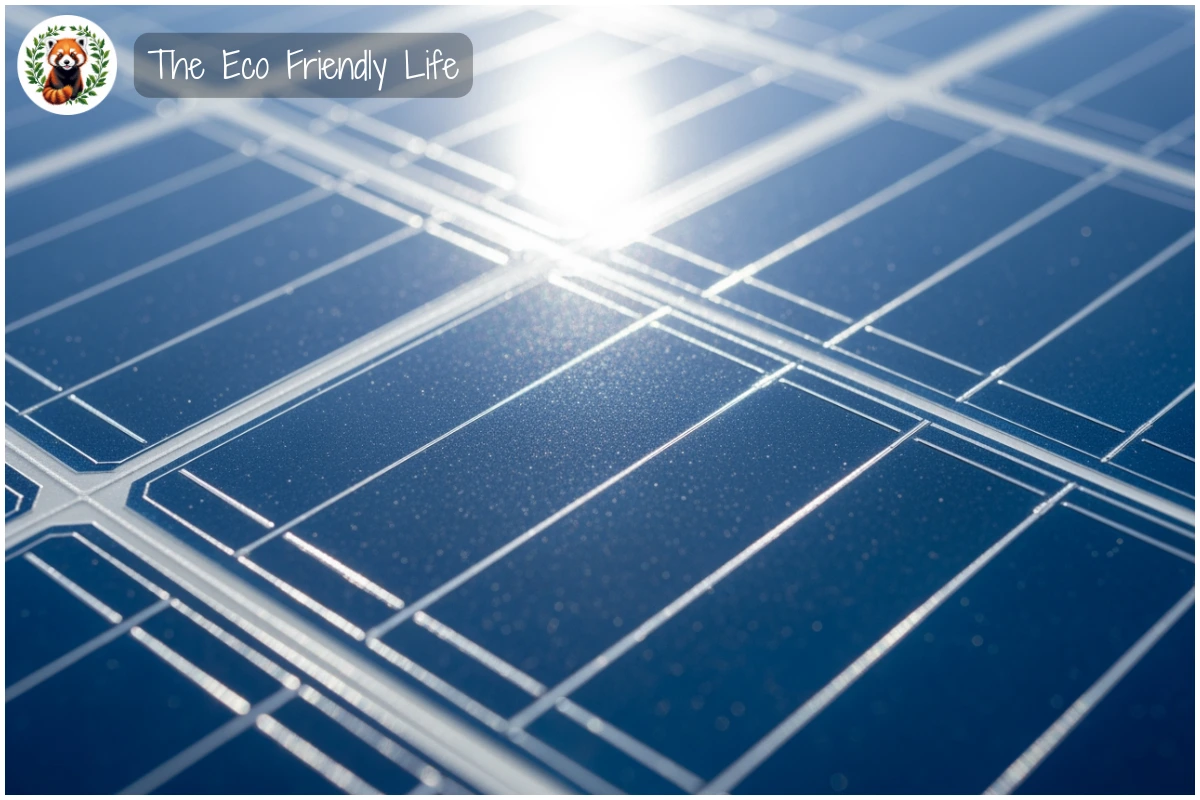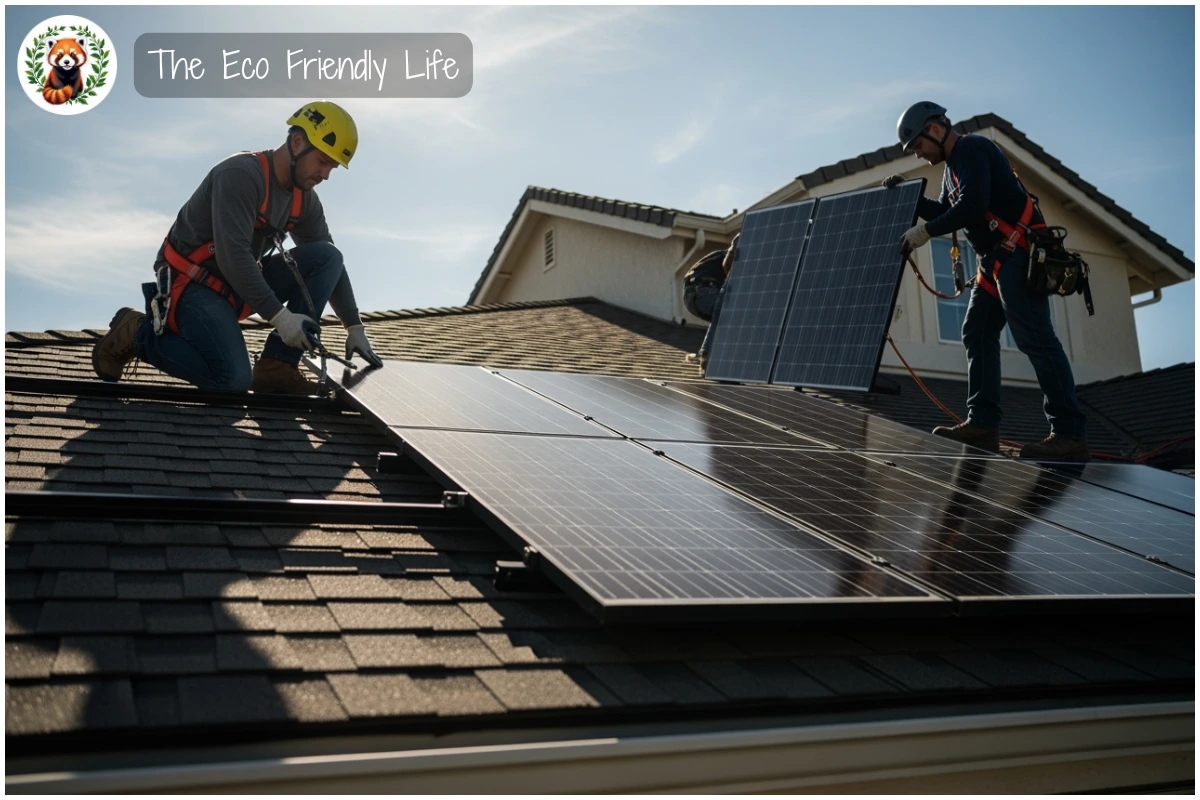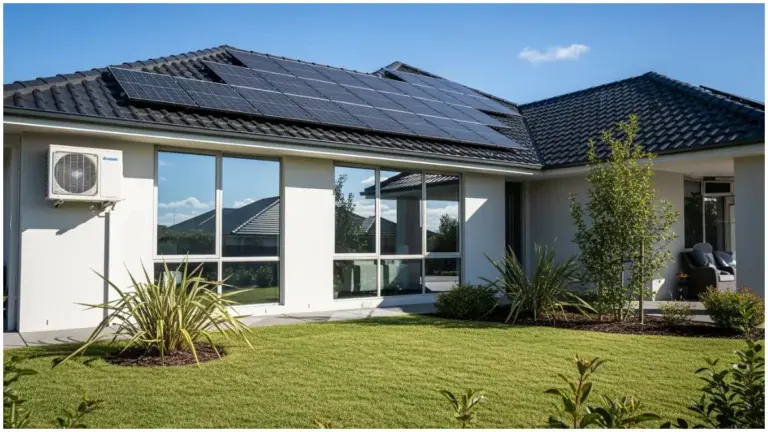The sun rises every morning, casting its golden rays across our planet and providing an abundant source of free energy that could power our homes, businesses, and communities. Solar power has emerged as one of the fastest-growing renewable energy sources worldwide, transforming how everyday people think about electricity and their impact on the environment. From small residential rooftops to vast solar farms spanning hundreds of acres, this clean technology is reshaping the global energy landscape while offering tangible benefits to those who embrace it.
I’m Katrina, and I’m excited to welcome you on this journey to understanding solar power—from the fascinating science behind how it works to the very real ways it can enhance your daily life and reduce your environmental footprint. Whether you’re curious about cutting your electricity bills, interested in energy independence, or simply want to make more sustainable choices, this comprehensive guide will provide you with the knowledge and practical steps you need. Continue reading to discover how solar energy can work for you and the simple actions you can take today to join the millions of people worldwide who are already benefiting from this remarkable renewable resource.
Understanding How Solar Panels Work
The Photovoltaic Effect: At the heart of solar power lies a fascinating scientific process called the photovoltaic effect. When sunlight strikes a solar panel, photons from the sun’s rays are absorbed by semiconductor materials, typically silicon. These photons carry enough energy to dislodge electrons from their atoms within the semiconductor, creating what scientists call electron-hole pairs. This movement of electrons generates an electrical current that can be captured and used as electricity.
Silicon Semiconductors Create the Magic: Solar cells are crafted from specially treated silicon that creates two distinct layers—a positively charged p-type layer and a negatively charged n-type layer. When these layers are sandwiched together, they form what’s known as a p-n junction. This junction creates an electric field that acts like a one-way valve for electrons. When sunlight energizes the electrons, this field directs them to flow in one direction, generating direct current (DC) electricity that powers our devices and appliances.
Converting DC to Usable AC Power: The electricity produced by solar panels is direct current, but most household appliances and the electrical grid operate on alternating current (AC). This is where inverters become essential. A solar inverter converts the DC electricity from your panels into AC electricity, making it compatible with your home’s electrical system. Modern inverters also perform crucial safety functions, monitoring system performance and automatically shutting down during grid outages to protect utility workers.

Different types of solar panels serve varying needs, making solar energy accessible to different situations and budgets. There are three main varieties: monocrystalline panels, which are made from single silicon crystals and offer efficiency rates of 15-23%; polycrystalline panels, created from multiple silicon fragments and slightly less efficient at 13-16% but more affordable; and thin-film panels, which are lightweight and flexible but typically less efficient overall. Most residential installations today use monocrystalline panels due to their superior performance and increasingly competitive pricing.
Now that you understand the science behind how solar panels convert sunlight into usable electricity, let’s explore why this technology matters so much for our planet’s future and the environmental benefits that make solar power such a compelling choice.
The Environmental Benefits of Solar Energy
Eliminating Carbon Emissions: One of solar power’s most significant environmental advantages is that it produces zero greenhouse gas emissions during operation. Unlike fossil fuel power plants that release carbon dioxide, methane, and other harmful pollutants when generating electricity, solar panels quietly convert sunlight into clean energy without any combustion or emissions. A typical residential solar system can reduce carbon emissions by approximately 20,000 pounds annually—equivalent to the emissions from driving 1.6 cars for an entire year.
Improving Air Quality for Everyone: Traditional power generation from coal and natural gas releases sulphur dioxide, nitrogen oxides, and fine particulate matter into the atmosphere, contributing to smog formation and respiratory problems in communities. Solar energy produces electricity without releasing these dangerous toxins, helping to improve air quality and protect public health. The more solar capacity we add to our energy mix, the fewer coal and gas plants need to operate, leading to cleaner, healthier air for everyone to breathe.
Conserving Precious Water Resources: Conventional electricity generation is water-intensive, with coal, natural gas, and nuclear power plants requiring enormous volumes of water for cooling systems. Solar photovoltaic panels, by contrast, need virtually no water to generate electricity once installed. This conservation is particularly valuable in regions facing water scarcity, where every gallon saved makes a difference to communities, agriculture, and natural ecosystems.
Supporting Global Climate Goals: The widespread adoption of solar energy plays a vital role in meeting international climate commitments. Analysis shows that a 15% increase in California’s solar capacity was associated with reductions of 913 and 1,942 metric tons of carbon dioxide emissions per day in the Northwest and Southwest regions respectively, thanks to existing transmission networks. These regional impacts multiply as more households, businesses, and communities embrace solar technology, contributing to meaningful reductions in global greenhouse gas concentrations.

Beyond protecting the environment, solar power delivers substantial financial advantages that impact your wallet directly. Understanding these economic benefits helps you see solar energy not just as an environmental choice, but as a smart financial investment.
Economic Advantages and Savings
Solar power delivers tangible financial benefits that extend far beyond the environmental advantages, making it one of the smartest investments for everyday homeowners looking to take control of their energy costs. Australian households with rooftop solar are collectively saving nearly $3 billion annually on their power bills, with the average household saving more than $1,500 each year. These figures aren’t hypothetical—millions of homeowners worldwide are experiencing similar savings, with total lifetime savings over a 25-year period ranging from $20,000 to $50,000 or more depending on system size and local electricity rates.
The economics become even more attractive when considering property values. Homes with solar installations consistently command premium prices in real estate markets. Properties with solar power systems are valued at approximately 2.7% more than comparable homes without solar, equating to a national average increase of about $23,100. In specific markets, the premium can be even higher—Brisbane homes with solar enjoy an uplift of 3.3% (around $30,219), while properties in some regional areas see increases of up to 6.9%. Additionally, homes with solar panels tend to sell 20% faster than those without, providing sellers with both financial gains and reduced time on the market.
Government incentives significantly improve the return on investment for solar installations. Many countries offer substantial support programs that reduce upfront costs and accelerate payback periods. Australia’s Small-scale Renewable Energy Scheme helps lower initial expenses, while various states provide additional rebates—Queensland offers $3,000 rebates for solar installations, and the Australian Capital Territory provides loans up to $15,000. In the United States, federal tax credits can cover up to 30% of installation costs, while European nations offer combinations of tax deductions, zero-VAT schemes, and low-interest loans. These incentives dramatically reduce the financial barrier to entry, making solar accessible to middle-income households worldwide.

With clear environmental and financial benefits established, discovering the right products and resources can help you make informed decisions about your solar journey. Let’s explore retailers that support sustainable solar living and align with your renewable energy goals.
Retailers That Support the Planet – Our Product Recommendations
Embracing solar power often means looking beyond traditional grid electricity to discover innovative products and educational resources that can deepen your understanding and enhance your renewable energy journey. Here are two retailers we recommend that align perfectly with the solar energy theme and offer valuable solutions for different needs.
Our Retailer Recommendation for Adults
BLUETTI – Portable Solar Power Solutions
BLUETTI specializes in portable power stations and solar generators that bring renewable energy wherever you need it. Their flagship AC200L model features a 2,048Wh capacity with 2,400W output, capable of powering essential home appliances during outages or providing reliable energy for RV adventures and off-grid living. With the ability to recharge through solar panels at up to 1,200W input, BLUETTI products perfectly complement rooftop solar installations by providing portable backup power and demonstrating how solar energy can be captured and stored for use anywhere, anytime.
Our Retailer Recommendation for Kids/Families
The STEM Store – Solar Education for Young Minds
The STEM Store offers an outstanding range of educational solar kits and toys designed to teach children about renewable energy through engaging, hands-on experiments. Products like their solar robot kits, solar-powered vehicles, and renewable energy learning sets allow kids to build working models powered entirely by the sun, making the principles of solar energy tangible and exciting. These educational tools help raise the next generation with an understanding and appreciation of clean energy, transforming abstract concepts into concrete experiences that can shape lifelong environmental awareness and inspire future careers in renewable technology.
These retailers demonstrate that solar power extends beyond rooftop installations to encompass portable solutions for energy independence and educational tools that cultivate environmental consciousness in young people. Once you’ve explored these resources and feel ready to move forward, the next step is understanding what the practical installation process looks like for a typical home solar system.
The Solar Installation Process
Initial Assessment and Design: The journey to solar power begins with a comprehensive property evaluation by a qualified solar installer. During this site assessment, professionals examine your roof’s condition, orientation, and structural integrity to determine its solar potential. They analyze sunlight exposure throughout the year, identify potential shading from trees or buildings, and review your household’s electricity consumption patterns from recent bills. This information helps design a system tailored to your specific energy needs and roof characteristics, ensuring optimal panel placement and appropriate system sizing—typically ranging from 3kW for small households to 10kW or larger for families with higher energy demands.
Permits and Approvals: Before installation can proceed, several administrative steps must be completed, though reputable installers typically handle most of this paperwork on your behalf. This includes submitting system designs to local authorities for building permits, securing approval from your electricity distributor for grid connection, and completing applications for government rebates and incentives such as Small-scale Technology Certificates (STCs). These regulatory requirements ensure your solar system meets safety standards and electrical codes, protecting both your household and utility workers who may service the grid.
Installation Day: The physical installation typically takes one to three days, depending on system size and complexity. Installers begin by securing mounting brackets or rails to your roof, using appropriate hardware for your roof type—whether tiles, metal, or other materials. Solar panels are then carefully positioned and locked onto the mounting system, with each panel’s orientation optimized to capture maximum sunlight. Electrical wiring connects the panels in series or parallel configurations to achieve the required voltage and current, running cables from the panels to the inverter location. The inverter is mounted near your main electrical panel, typically on a shaded external wall or inside a garage, where it can efficiently convert DC power to AC electricity for household use.
Grid Connection and Final Testing: Following installation, the system undergoes comprehensive testing to verify proper operation and safety compliance. Your electricity distributor may conduct a remote or on-site inspection before authorizing grid connection. Once approved, your existing meter may be upgraded to a bidirectional smart meter that tracks both electricity consumed from the grid and surplus solar energy exported back. The installer will demonstrate the monitoring system—often accessible via smartphone app—that allows you to track your solar production, household consumption, and financial savings in real-time. From this point forward, your solar panels begin generating clean electricity, reducing your grid reliance and lowering your energy bills.

Now that you understand what professional installation involves, you might be eager to explore actionable ways to maximize your renewable energy benefits and get the most from your solar investment. Let’s discover practical everyday steps you can implement starting today.
Practical Daily Tips You Can Action Today
Taking meaningful action toward solar energy and sustainable living doesn’t require waiting for a full system installation. These practical tips help you maximize solar benefits if you already have panels, prepare for future installation, or simply reduce your overall energy consumption in support of cleaner power sources.
| Tip | How to Implement | How It Helps |
|---|---|---|
| Time energy use with sunlight | Run washing machines, dishwashers, and pool pumps during daylight hours when solar panels generate maximum power. Avoid using high-energy appliances at night when you must draw from the grid. | Maximizes self-consumption of free solar electricity, reducing grid purchases and lowering bills. |
| Monitor your solar production | Install or use the monitoring app that comes with your solar system to track daily generation patterns. Check it weekly to ensure panels are performing as expected. | Helps identify shading issues or equipment problems early, ensuring optimal system performance and maximum savings. |
| Keep panels reasonably clean | Hose down panels two to four times yearly with plain water, avoiding harsh chemicals or abrasive materials. In dusty or coastal areas, increase frequency to maintain efficiency. | Dirty panels can lose up to 20% of their energy output. Regular cleaning maintains peak performance and extends panel lifespan. |
| Audit your energy use | Review your electricity bills to identify usage patterns and peak consumption times. Note which appliances use the most power and when they operate. | Understanding your energy profile helps you shift consumption to solar production hours and identifies opportunities for efficiency improvements. |
| Upgrade to LED lighting | Replace incandescent and CFL bulbs with LED alternatives throughout your home. LEDs use 75% less energy and last significantly longer. | Reduces overall electricity demand, making it easier for solar panels to cover your household needs and maximizing bill savings. |
| Insulate your home | Add insulation to ceilings, walls, and floors. Seal gaps around doors and windows to prevent air leaks that force heating and cooling systems to work harder. | Reduces heating and cooling loads by up to 40%, decreasing overall energy consumption and allowing smaller solar systems to meet your needs. |
| Consider solar hot water | Install solar thermal collectors or a heat pump hot water system that uses renewable energy instead of electric or gas heating. | Water heating accounts for approximately 25% of household energy use. Solar hot water dramatically reduces this consumption. |
| Plant strategic shade trees | Plant deciduous trees on the north and west sides of your home (in the Southern Hemisphere) to shade walls and windows during hot months. Ensure they won’t shade solar panels. | Natural cooling reduces air conditioning needs during summer, lowering energy consumption while allowing winter sun to warm your home naturally. |
| Investigate community solar | Research local community solar programs if you rent or cannot install rooftop panels. These programs let you buy into shared solar farms and receive bill credits. | Provides solar benefits to renters, apartment dwellers, and those with unsuitable roofs, making clean energy accessible to everyone. |
| Educate family members | Discuss energy efficiency and solar benefits with household members. Create simple routines like running appliances during sunny hours and turning off devices when not in use. | Family-wide participation multiplies efficiency gains and establishes sustainable habits that benefit the environment and reduce costs long-term. |
These practical steps demonstrate that solar benefits extend beyond installation to encompass mindful energy consumption, strategic efficiency improvements, and community engagement. By implementing even a few of these actions, you contribute to a cleaner energy future while enjoying immediate financial and environmental returns. You likely have some questions about solar power, so let’s address the most common ones people ask.
Frequently Asked Questions
Here are answers to some common questions about solar power and its implementation.
How long do solar panels typically last?
Most quality solar panels come with 25-30 year warranties and can continue producing electricity for 40 years or more, though efficiency gradually decreases over time by about 0.5% annually.
Can solar panels work on cloudy or rainy days?
Yes, solar panels still generate electricity on overcast days, though at reduced capacity—typically 10-25% of their peak output. They capture diffuse sunlight that penetrates cloud cover, ensuring some energy production even in less-than-ideal conditions.
What happens to excess solar electricity my panels produce?
Surplus electricity is typically exported to the grid through net metering arrangements, earning you credits or payments at feed-in tariff rates. Alternatively, home battery systems can store excess energy for use during evening hours when panels aren’t producing.
Do I need to replace my roof before installing solar panels?
If your roof is in poor condition or nearing the end of its lifespan, it’s wise to repair or replace it first. Solar panels can last 30+ years, so installing them on a roof that will need replacement soon would require removing and reinstalling the panels, adding unnecessary cost.
Organizations to Support – Our Recommendations
Several outstanding global organizations are advancing solar energy access and renewable power worldwide, and they welcome your support to expand their vital work.
- SolarAid works with communities across sub-Saharan Africa to provide sustainable solar programs where grid electrification cannot reach. Since inception, they’ve distributed 2.3 million solar lights to 12.5 million people in Malawi, Zambia, Uganda, and Senegal, helping families save $290 million by eliminating expenses on dangerous kerosene and candles. You can contribute to their mission by donating to SolarAid.
- International Renewable Energy Agency (IRENA) serves as an intergovernmental organization supporting countries in their transition to sustainable energy futures. With 171 member countries, IRENA provides comprehensive renewable energy data, policy guidance, and technical support to accelerate global adoption of solar and other clean energy technologies. Learn more about their work and explore resources at www.irena.org.
- Renewable World creates locally-led renewable energy projects in Kenya and Nepal, empowering underserved communities to build resilient livelihoods through clean energy access. They’ve reached 123,000 people with renewable solutions while helping avert 33,000 tons of carbon dioxide from the atmosphere. Support their community-based approach by donating to Renewable World.
These organizations demonstrate solar energy’s power to transform lives globally, providing not only environmental benefits but also economic opportunity and improved quality of life for communities that need it most.
Resources and Further Reading
For those seeking deeper knowledge about solar energy technology, policy, and implementation, these expert resources provide comprehensive information and ongoing updates.
- International Solar Energy Society (ISES) stands as the world’s longest-standing solar organization, founded in 1954, offering prestigious academic publications, conferences, and webinars on solar energy advances. Their technical resources and professional network connect researchers, engineers, and advocates advancing solar technology worldwide. Access their extensive resources at www.ises.org.
- Clean Energy Council Australia provides the definitive resource for Australian solar standards, accredited installers, and industry best practices. Their comprehensive guides cover everything from choosing quality solar products to understanding recycling requirements for end-of-life panels, making them essential for Australian residents. Explore their knowledge hub at www.cleanenergycouncil.org.au.
- U.S. Department of Energy Solar Energy Technologies Office (SETO) offers extensive technical documentation, research findings, and funding information about solar energy development. Their resources explain photovoltaic technology, system design, and integration challenges while highlighting cutting-edge innovations shaping solar’s future. Find detailed information at www.energy.gov/eere/solar.
These organizations provide credible, science-based information that can deepen your understanding and help you make informed decisions about solar energy adoption and advocacy.
Our Related Articles

How To Make Your Home Energy-Efficient
Rising energy costs and growing environmental concerns are driving more people than ever to rethink how they power their homes. The good news? Making your…
Read More
Renewable And Non-Renewable Energy Sources Explained
Energy powers every aspect of modern life, from the lights in our homes to the vehicles we drive and the industries that create the products…
Read MoreConclusion
Solar power represents far more than an alternative energy source—it’s a practical, increasingly affordable solution that empowers everyday people to take control of their energy costs while contributing meaningfully to environmental protection. From the fascinating photovoltaic effect that transforms sunlight into electricity to the tangible financial benefits of reduced bills and increased property values, solar energy offers compelling advantages that touch multiple aspects of our lives. The installation process, while requiring initial investment and professional expertise, has become streamlined and accessible to millions of homeowners worldwide, supported by government incentives and improving technology.
The environmental case for solar is equally powerful and urgent. Every solar panel installed reduces carbon emissions, improves air quality, conserves water resources, and moves us closer to the climate goals scientists tell us we must achieve. Whether you’re motivated by financial savings, environmental responsibility, or energy independence—or all three—solar power provides a proven pathway to achieve your goals while joining a global movement toward cleaner, more sustainable energy systems.
Now it’s your turn to take action. Start with the practical tips outlined in this article, research installers in your area, investigate available incentives, or simply educate yourself further about solar technology. Every journey toward solar power begins with a single step, and that step starts today. What’s holding you back from exploring solar energy for your own home or encouraging your community to embrace this remarkable renewable resource? Share your thoughts, concerns, or experiences with solar power in the comments below—your perspective might inspire someone else to make the switch to clean, sustainable solar energy.


